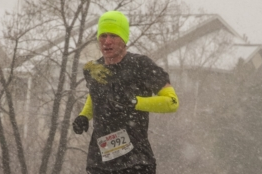When global change occurs, one way to consider it is its impact going forward on specific activities or areas. Given that the COVID-19 pandemic is a fluid situation, any attempts to measure future impact could change but we can go with the information we have. The Boston and London Marathons are now scheduled to take place in the fall. This means there could be five major marathons between September and November, and most elite athletes will likely only choose one of those. The probable change here isn’t so much on the overall winners (there were five unique major marathon winners in 2019, there could be six in 2020 as the elite Tokyo race was held on 1 March) but on the number of unique competitors in each field. Since most elite athletes will only run one fall marathon, there will probably be more different faces in each one and thus a greater variety of names among the top finishers. Because running success is based primarily on speed, even if the second through tenth place finishers in the majors feature many new faces, that doesn’t guarantee a nice vault into sustained success for them. On the other hand, nabbing an unexpected podium finish may very well be the boost that an up-and-coming elite marathoner uses to unlock even more ability. With a new potential GOAT contender emerging and two others running at their peak, the distance running world already seemed poised for change. A pandemic-influenced schedule change is not what any athlete wants to see shifting the balance, but it may be an unavoidable result.
The change in the Olympic schedule is disappointing, yet it also yielded some positive responses. The shoe technology war has dominated headlines for months now, and there is the thought that with the Olympics being sixteen months away as opposed to four, the other shoe companies not named Nike have time to develop technology that could put their sponsored athletes on a more level playing field. Once elite distance racing resumes, we’ll see whether that’s the case.
No one would wish the current situation to have evolved as it has and there is a lot of disappointment. But, there may be some changes that come out of it that are beneficial to us going forward.
On a lighter note related to race schedule adjustments, I have not signed up for any races and probably will not until it’s reasonably certain they’ll be held. However, I bought a pair of racing flats, the Brooks Hyperion, back in February and I also received my new Runners Roost Race Team singlet. It was a shame to not be using them for official races so the other morning, I did a one-mile time trial on our neighborhood loop decked out in the singlet and the flats. I’m sure it looked bizarre but it felt good, and it was a fun way to keep up the race mentality and use the new gear.

Running anecdotes, running food reviews, some race coverage, and more